Looking back: October 1935. Conventions and celebrated surgeons
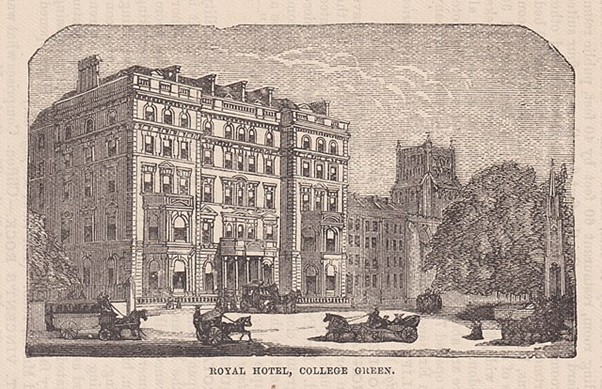
In this edition of Looking back, we see how in October 1935 the Journal highlighted a regional convention and published a number of articles by renowned surgeons.
An Autumn Convention in Bristol
In 1935, the Incorporated Society of Chiropodists (ISC) held its Autumn Convention in Bristol for the first time. This took place between Friday 4 and Sunday 6 October. It was the latest in a regular cycle of conventions that had begun in the early twentieth century. The pattern usually consisted of one main convention in London during the spring then one in the provinces during the autumn. The belief from the President and Council was that holding such provincial conventions would increase the awareness and influence of the ISC across the UK.
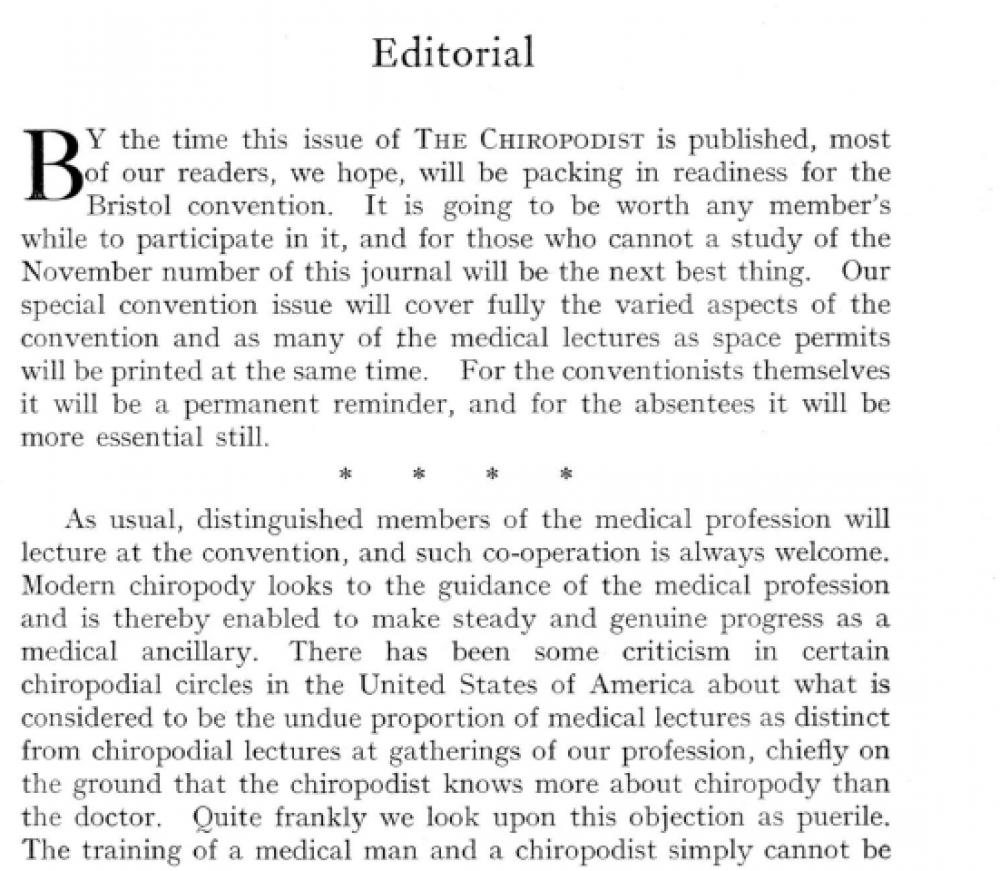
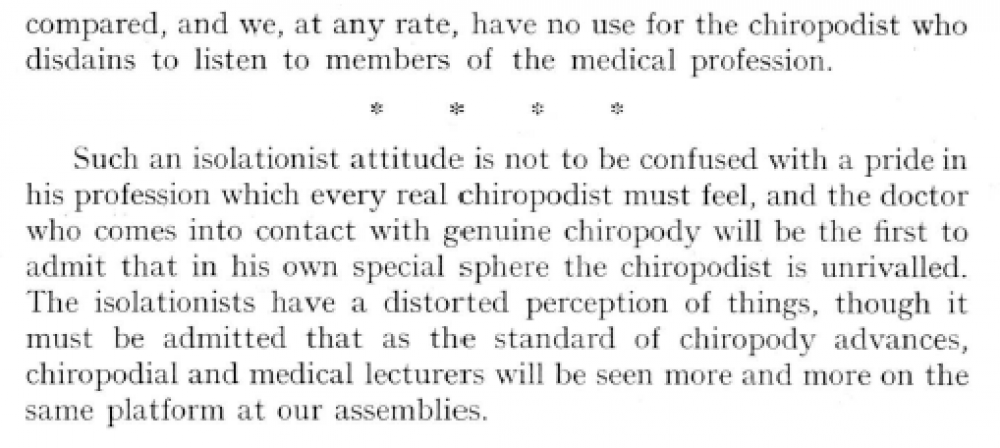
The headquarters for the 1935 convention were the Berkeley Rooms on Queen’s Road. This was a café/tearoom/function room at the time and was owned by Cadena Cafés Ltd. This was one of many cafés they owned across the Southwest including two more in Clifton and one on College Green (https://en.wikipedia.org/wiki/Cadena_Cafes_Limited). This Queen’s Road premises is now public house.
A selection of hotels was suggested to potential attendees including The Royal Hotel on College Green at 10s 6d per night, and the Colston Hotel, College Green at 7s 6d per night.

Above: The Royal Hotel, situated on College Green, Bristol. 18721
The programme for the Convention
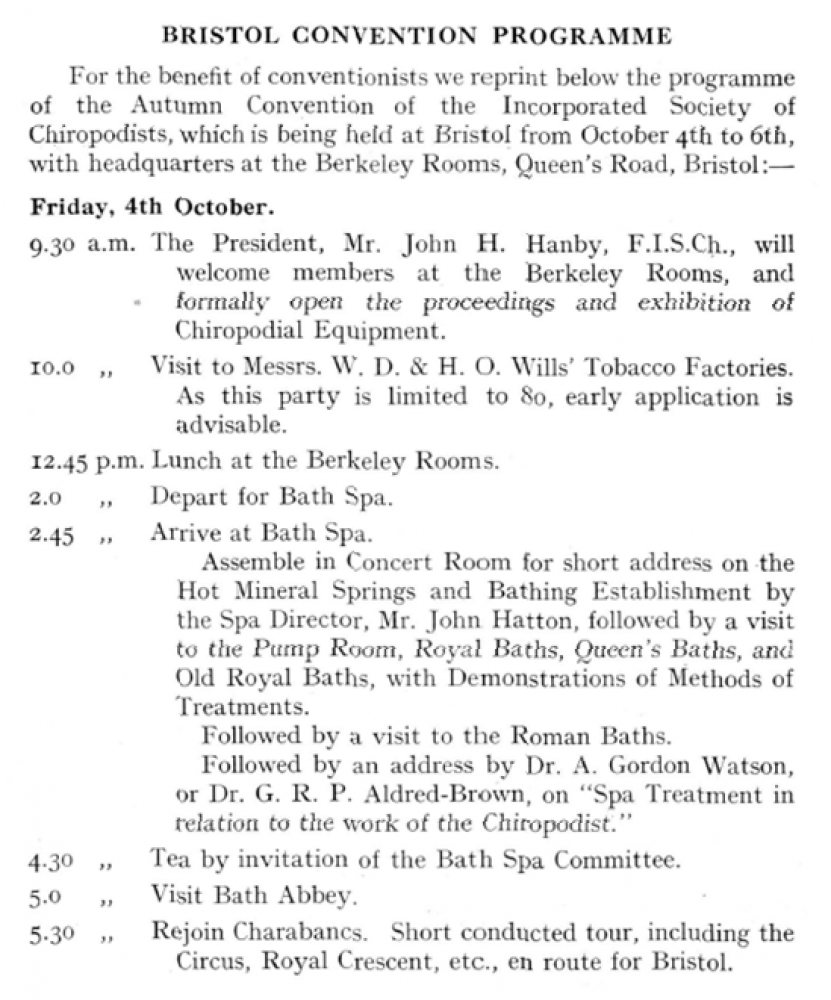
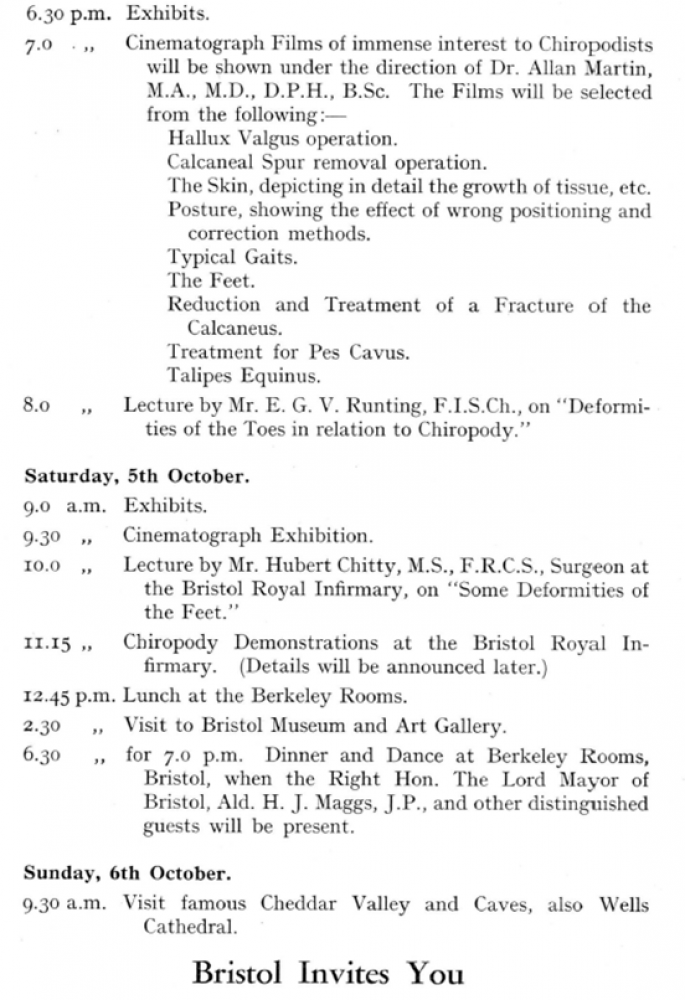
How the Bristol Convention was received
The following edition of the journal (November 1935) had the following to say about the Bristol Convention: it seems like it was a great success. However, Bristol wasn't to see another convention until 1976 (the one planned for 1971 was cancelled due to a postal strike).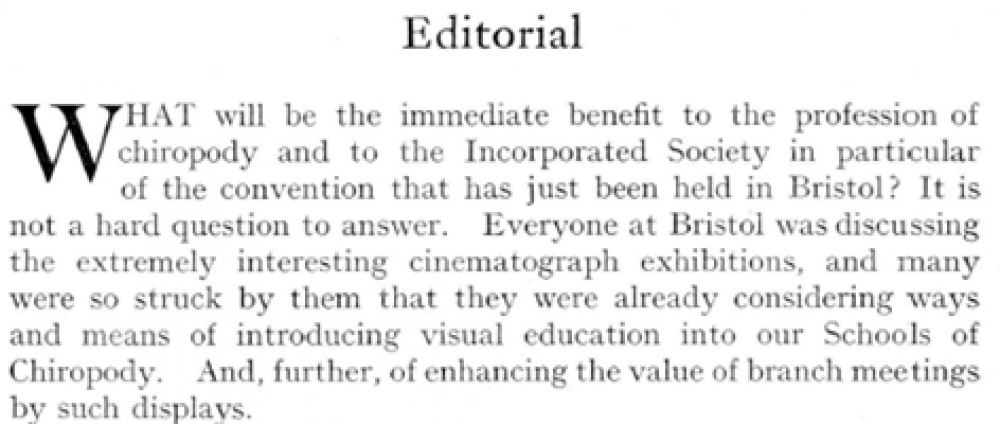

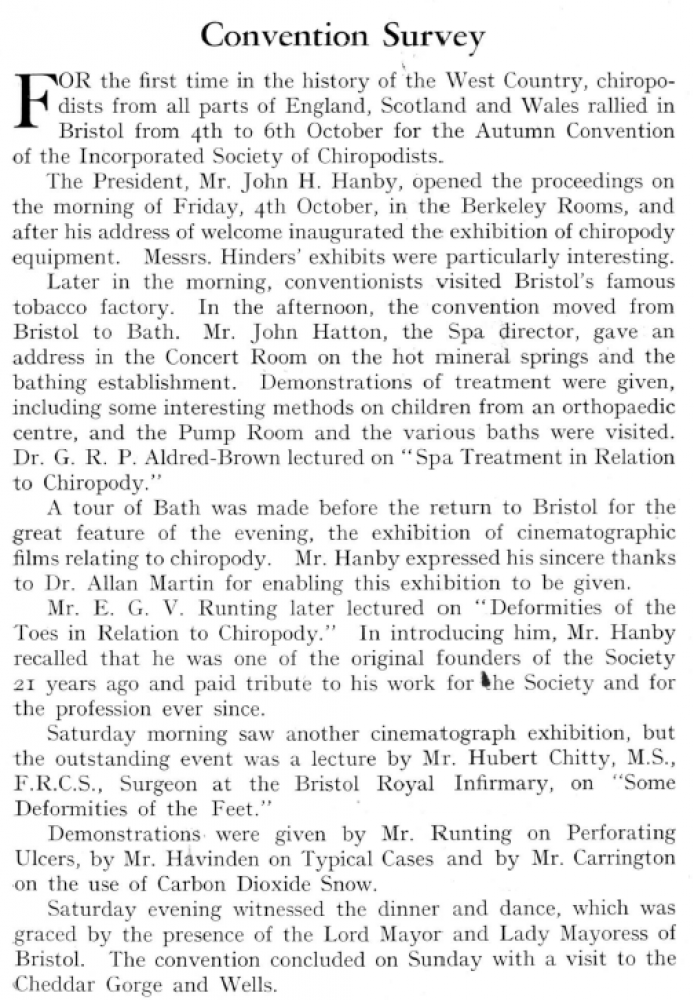
Articles by renowned surgeons
Additionally, this edition of the Journal contained several scholarly articles by renowned surgeons. The first of these was written by Constantine Lambrinudi (1889-1943).
Constantine Lambrinudi
He was educated privately and then studied at Cambridge. In 1910, he joined Guy's Hospital Medical School. He paused his medical studies to serve in a Red Cross unit, as an unqualified doctor but later became a medical officer in the British Royal Air Force. Returning to Guy's he ultimately became house surgeon and surgical registrar at the Royal Free Hospital.2
The Lambrinudi triple arthrodesis technique is still used today. Though normally reserved for complex hindfoot deformities rather than the paralytic drop foot it was originally designed to treat. An operation to realign and stiffen (fuse) part of the hindfoot due to severe deformity. It may be done alongside other orthopaedic foot surgery.
Lambrinudi was awarded an Honorary Fellowship in 1937 – this excerpt is taken from the AGM minutes of that year.
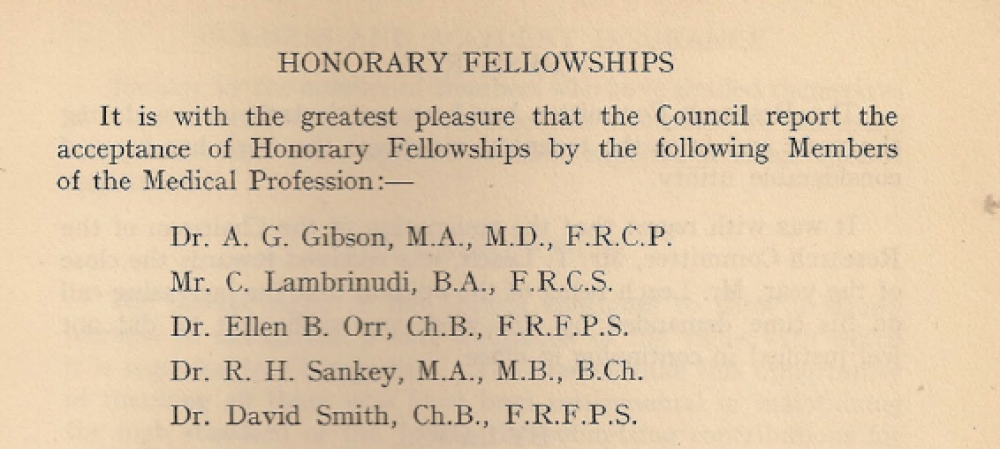
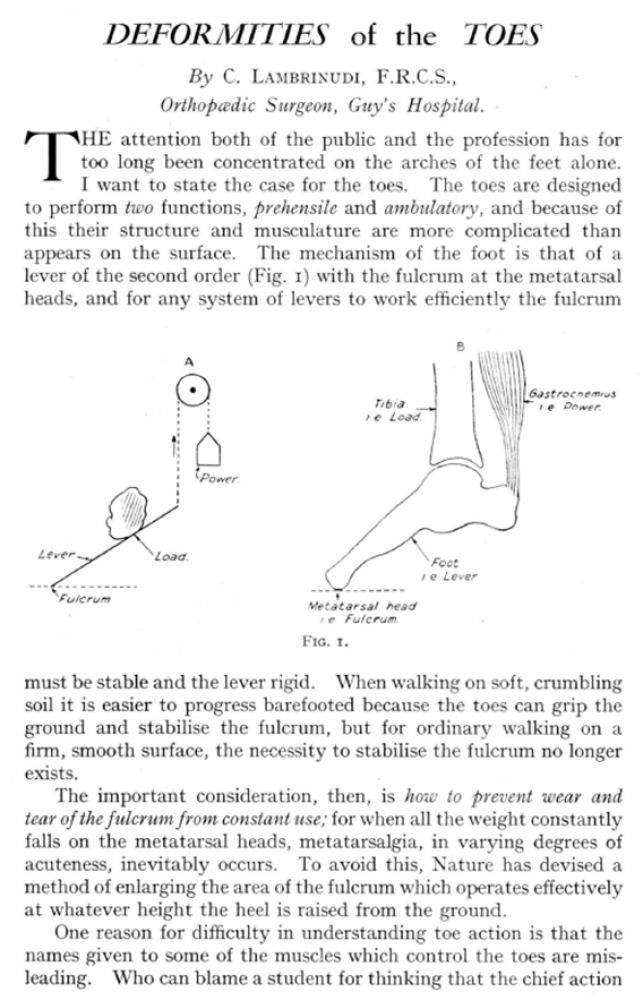
As well as the Lambrinudi piece, there were two different articles on feet contributed by renowned surgeons from the Mayo Clinic, Rochester, Minnesota. This renowned clinic was first opened in 1864 by Dr William Worrall Mayo. In 1915, the Mayo Foundation was established and its work in healthcare, education, research, and patient centered care continues today.

The first of these articles (regarding painful heels in children) was co-authored by Henry William Meyerding and Walter Goodloe Stuck.
Henry Meyerding
Meyerding (1884–1969) was renowned for his innovative work in spinal pathology. Born in St. Paul, Minnesota, he trained and practised at the Mayo Clinic, where he developed the Meyerding grading system. This is a method for classifying the severity of spondylolisthesis, still widely used in orthopaedics today. His career spanned clinical practice, international surgical education, and leadership roles, including presidency of the International College of Surgeons. His co-author Stuck (1905–1950) was a prominent surgeon and medical author based in San Antonio, Texas. He gained worldwide recognition in the 1940s for his pioneering work on the internal fixation of fractures. In addition, Stuck published many articles in leading medical journals and contributed significantly to orthopaedic surgical techniques.
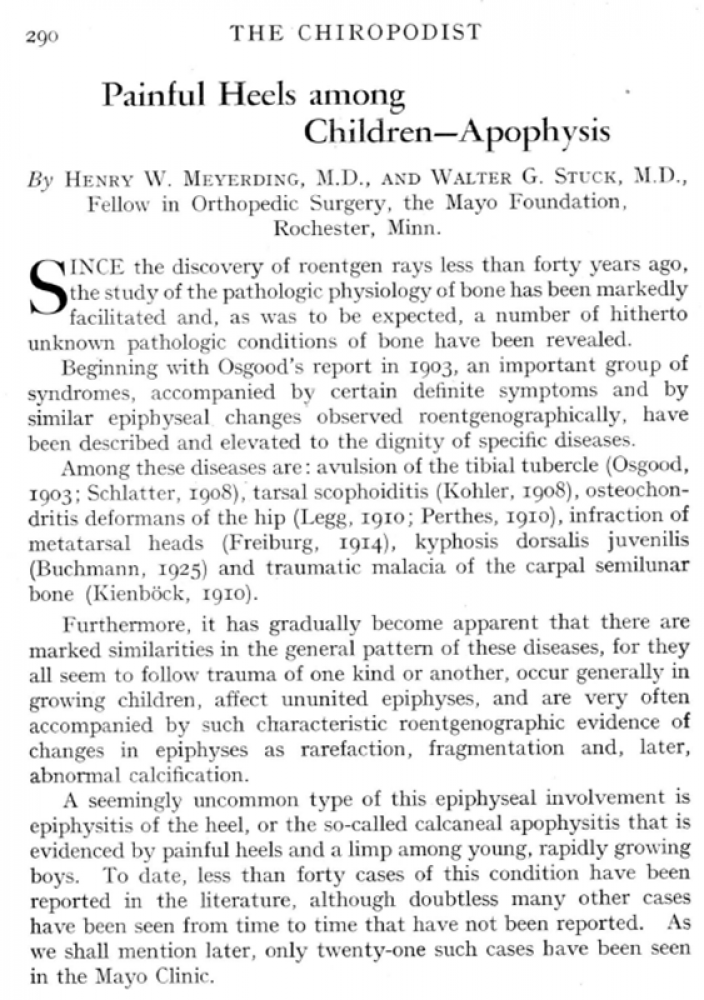
Nelson Waite Barker
Following this, was a piece by Nelson Waite Barker regarding gangrene of the toes. Barker (1899-1968) was renowned as an expert in vascular trauma, diseases of the blood vessels and circulation. Furthermore, he authored or co-authored more than 200 and chapters in medical textbooks. He did groundbreaking work in establishing the effectiveness of anticoagulant drugs.
A final word from Ernest Runting
Finally, a thought from Ernest Runting in his Jottings column about the chiropodist's seat of power.

Notes:
1. https://commons.wikimedia.org/wiki/File:Royal_Hotel_College_Green_1872.jpg
2. https://livesonline.rcseng.ac.uk/client/en_GB/lives/search/detailnonmodal/ent:$002f$002fSD_ASSET$002f0$002fSD_ASSET:376514/one?qu=%22rcs%3A+E004331%22
3. Mayo Clinic and Foundation, Rochester, Minn [graphic] : Exterior view of early office shared by Mayo brothers and their father., CC0, via Wikimedia Commons"
